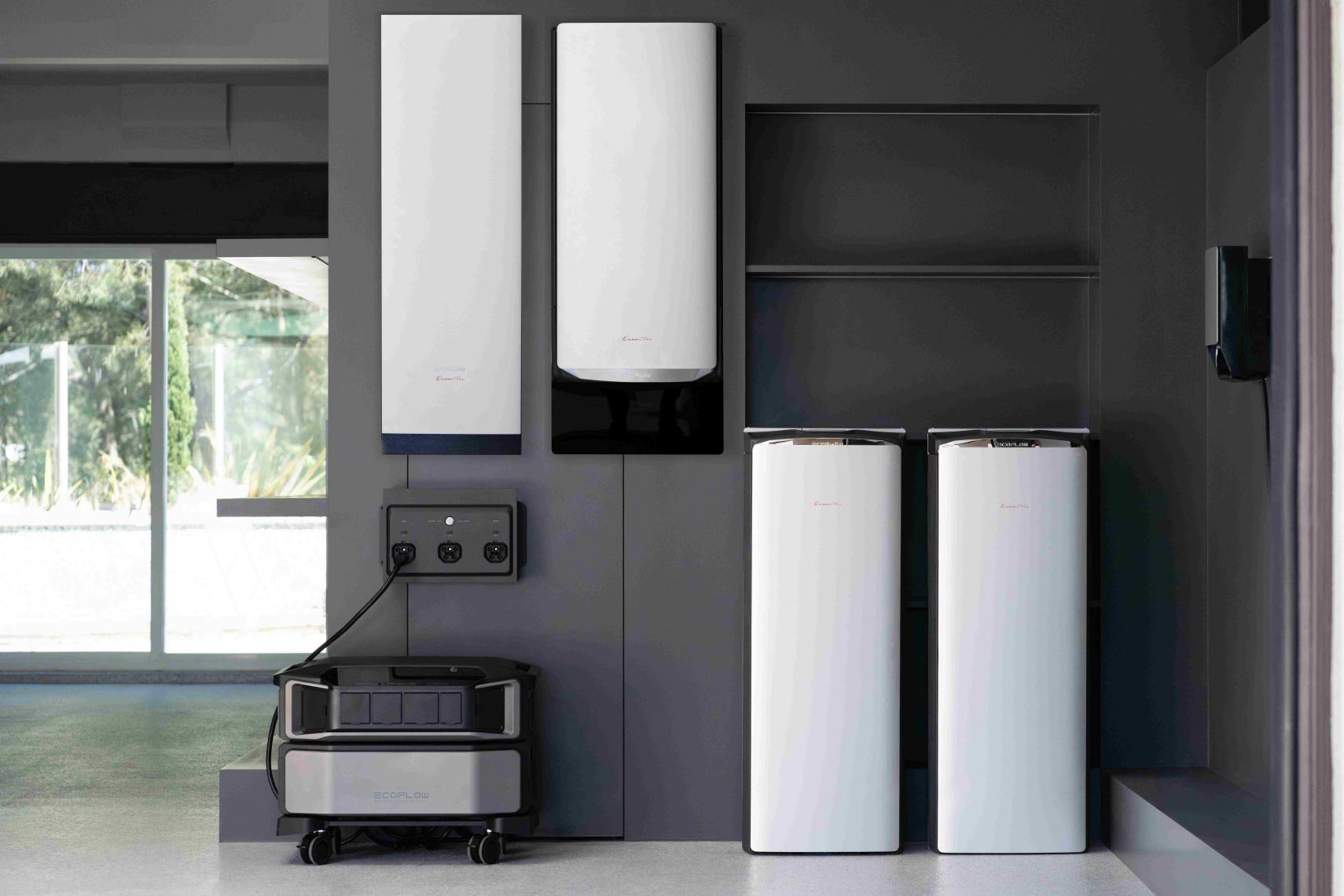Home Energy Monitor: An Ultimate Guide
Your electricity bill keeps climbing, but you're not sure why. A home energy monitor gives you real answers. This device tracks your power usage in real-time, showing exactly where your electricity goes. Households typically reduce their electricity use by about 2–9% with real-time feedback, and the actual yearly savings depend on local rates and usage patterns.
What Is a Home Energy Monitor?
Every month, your utility company sends a bill with a single number: the total kilowatt-hours used. That's like getting a restaurant check without seeing what you ordered. A home energy monitor breaks down that mystery.
Basic Definition and Core Functions
A home energy monitor is hardware that connects to your electrical system and tracks power consumption. The device measures electricity flow, then sends data to your phone or computer. You'll see which appliances use the most power, when your usage spikes, and how much each device costs to run.
How Real-Time Monitoring Works
The monitor uses sensors—either clamps that wrap around wires or circuits that connect directly to your panel. These sensors detect electrical current flowing through your system. The data is sent to a central unit, which processes the information and displays it through an app or web dashboard.
Data Collection and Analysis
Modern systems sample your electrical usage thousands of times per second. This frequent sampling creates an accurate picture of your consumption patterns. The software identifies individual appliances based on their unique electrical signatures—your refrigerator, air conditioner, and washing machine each have distinct power patterns.
Differences from Smart Meters
Your utility's smart meter measures the total household consumption for billing purposes. A home energy monitoring system provides more in-depth insights, displaying device-level details and offering instant feedback. Smart meters report to the power company; home monitors report to you.
Understanding these basics helps you see why monitoring matters. Once you know what's happening, you can actually make a change.


What Types of Home Energy Monitoring Systems Are Available?
Not all monitors work the same way. Your choice depends on whether you want whole-house tracking or just want to monitor specific outlets.
Whole-Home Monitoring Systems
These connect directly to your electrical panel and track all electrical activity in your house. Installation requires opening your breaker box, which usually means hiring an electrician. You can look at EcoFlow PowerInsight 2—a panel-based monitor designed to coordinate with solar and home batteries for whole-home visibility and automated load shifting.
Smart Plug Monitors
These are the DIY options. Plug one end into any outlet, then plug the other end into the monitor. The device tracks that specific outlet's consumption. They're perfect for tracking problem appliances, although buying enough for every outlet can get expensive.
Current Sensor Monitors
These clip-on devices wrap around individual circuit wires without requiring permanent installation. They measure current flow and send data wirelessly to a hub. This middle-ground option allows you to monitor specific circuits without requiring smart plugs on every outlet.
Smart Home Integration Options
If you already use systems like Google Home, Amazon Alexa, or Apple HomeKit, look for monitors that connect to your existing setup. Integration enables you to control devices based on energy data—such as automatically turning off power-hungry appliances during peak rate hours.
Comparison of Different Types
| Type | Installation | Cost | Coverage | Best For |
| Whole-Home | Professional | $200-400 | Everything | Complete tracking |
| Smart Plugs | DIY | $15-30 each | Single outlet | Specific devices |
| Current Sensors | Semi-DIY | $50-100 | Selected circuits | Key areas |
| Integrated Systems | Varies | $150-500 | Depends on setup | Smart home users |
Each type has trade-offs between cost, complexity, and coverage. Pick what matches your technical comfort level and monitoring goals.
How Do You Choose the Right Smart Home Energy Monitor?
Walking into this purchase blind wastes money. Here's what truly matters while shopping.
Functional Requirements
- Real-Time Alerts and Notifications: Receive text or push notifications whenever the Usage spikes or Devices go faulty. If your water heater operates throughout the night, you'll be notified instantly rather than discovering it on next month's bill.
- Mobile App Management: Monitor use anywhere. Good apps have real-time use, historical patterns, and estimated costs. Seek simple interfaces—are you able to comprehend the app within five minutes? If you don't use the app, you won't reap the benefits.
- Appliance Unit Monitoring: The best systems automatically identify appliances through machine learning. Lower-quality systems show circuit-level data. Appliance recognition takes a few weeks as the system learns the routines of your home.
- Historical Data Analysis: Monitor used by the hour, day, or month. This identifies patterns, such as whether weekday use differs from weekends, or which season was the most costly.
Technical Compatibility
- Integration of Smart Home System: Select your monitor and pair it with your system. Those using Google Home are interested in products that feature Google Assistant. Apple enthusiasts require HomeKit integration. Verify and purchase.
- Electrical Panel Requirements: Measure your panel space before purchasing whole-home systems. Certain older homes have densely packed panels without any extra space for hardware. You might have to specialize in split-bus panels or subpanels.
Purchase Decisions
Installation Difficulty: Be honest about your level of expertise. It's hazardous to open an electrical panel when electrical power is flowing through it. Most of the whole-home systems recommend "professional installation required" expressly. Smart plugs are foolproof; panel monitors are not.
Price and Value: Pay $200-$ 400 for high-quality whole-home monitoring. You'll have to opt for a more affordable option and sacrifice certain features or risk losing support. Smart plug surveillance is lower in price but expensive in the long term if you have to cover numerous outlets.
Recommended Brands: If you are sizing solar plus storage, shortlist EcoFlow PowerInsight 2 (monitoring) and EcoFlow OCEAN Pro storage/inverter—OCEAN Pro provides 24 kW of continuous/50 kW of peak output and scales to 80 kWh (IP67, 3.3 ft flood-resistant, 15-year warranty) for an integrated, future-ready system.
The ideal choice integrates your level of technical expertise, budget, and level of desired detail. Start by applying your most energy concern and working backward.
How to Monitor Energy Usage at Home and Save Money?
Purchasing the monitor is step 1. Putting it to good use requires effort—but effort that saves money
Getting Started with Monitoring
1. Establishing Your Baseline: Keep your home operating normally for 1-2 weeks post-installation. This baseline represents your average usage before the change. Keep in mind, the seasonal effects—a/c in the summer or heating in the winter have a significant impact on the baseline.
2. Reading Energy Reports: Most apps show daily summaries, peak usage times, and cost breakdowns. Look for unexpected patterns. A typical dishwasher cycle uses ~1 kWh, and water heating can account for a significant portion of a load's total energy.
Detecting Problems
1. Finding Energy Hogs: You'll be amazed. That old fridge of yours? It can significantly increase your bill this month. Space heaters, pool pumps, and electric water heaters are typically the biggest offenders. How much you'll save varies by product.
2. Peak Usage Hours: If your utility has time-of-use rates, operating appliances off-peak results in hard cash savings. Reschedule laundry, dishwashing, and EV charging to late night or early morning when the rate decreases relative to the TOU peaks.


Taking Action
1. Developing Your Savings Plan: Choose your three largest energy consumers and start there. Replace one, tune another, retire the third if you can. Little adjustments add up—turning off lights and appliances tonight, setting the thermostat back 2-3 degrees, and sealing air leaks can reduce your bills by 10-15%.
2. Practical Habit Changes: Phantom loads--devices consuming power while "off"-- squander 5-10% of household electricity, says Department of Energy statistics—place entertainment systems and computer gear on smart power strips, which shut off power completely when the device is off.
Results Measurement
1. Tracing Your Savings: Make comparisons of monthly use after modifications. Quality monitors display percentage reductions and dollar savings. Most customers observe typical results within one to two billing periods.
2. Calculating Return on Investment: If your monitor costs $300 and saves $25 monthly, you break even in a year. Everything after that is pure savings. Factor in behavioral changes lasting years—the investment pays off multiple times over.
Monitoring works because it makes invisible electricity visible. Once you see waste, you naturally eliminate it.
Frequently Asked Questions
Q1. Can I Install a Home Energy Monitoring System Myself Without an Electrician?
It depends on which type you choose. Smart plug monitors are completely DIY—just plug them in and download the app. Panel-based whole-home systems are different. These require opening your breaker box and working around live 240-volt circuits, which can be fatal if done incorrectly. Even if you're handy, most manufacturers and local codes require licensed electricians for panel work. Insurance issues matter too—if something goes wrong with DIY electrical work, your homeowner's policy might not cover damages. Budget $150-$ 300 for professional installation, in addition to equipment costs. Some companies offer installation services or can connect you with certified installers in your area.
Q2. Do Home Energy Monitors Work with Apartments or Rental Properties?
Yes, but your options are limited. Renters can't modify electrical panels, which rules out whole-home monitoring systems. Smart plug monitors work perfectly in rentals—they plug into existing outlets without any permanent changes. Track your largest appliances, such as air conditioners, space heaters, or refrigerators, this way. Some newer apartment buildings have smart panels that feed data to tenant apps, which is still common. The downside is that you can only monitor devices plugged into your smart plugs, not hardwired appliances like ovens or central air conditioning units. Still, most renters find monitoring 5-6 key outlets gives enough data to cut their electricity bills meaningfully.
Q3. How Long Does It Take to See Savings After Installing a Home Energy Monitor?
Most people notice changes within the first month, but real savings build over time. The first week two establishes your baseline—how much you typically use. Weeks 2-4 involve identifying waste and making simple fixes, such as adjusting thermostats or unplugging phantom loads. These quick wins can save 5-10% immediately. Bigger savings come from informed decisions about appliance replacements or upgrades, which happen over months or years. Studies from utilities offer simple monitoring, such as those showing that average households reduce their consumption by 8-12% in the first year. The key is actually checking your data regularly—people who review their monitor weekly save twice as much as those who ignore it after installation.
Conclusion
Stop guessing where your electricity goes all through a home energy monitor this week and start tracking real data. Whether you choose a complete home energy monitoring system or start small with smart plugs, visibility drives savings. Take control of your energy costs today—your wallet will thank you.
Ready to move from insights to outcomes? Start with the EcoFlow PowerInsight 2 Home Energy Monitor for live, circuit-level data, then scale into EcoFlow OCEAN Pro—a modular, IP67-rated storage and 24 kW backup platform (expandable up to 80 kWh)—so your home energy monitor data turns into automated load shifting, bill savings, and whole-home resilience.